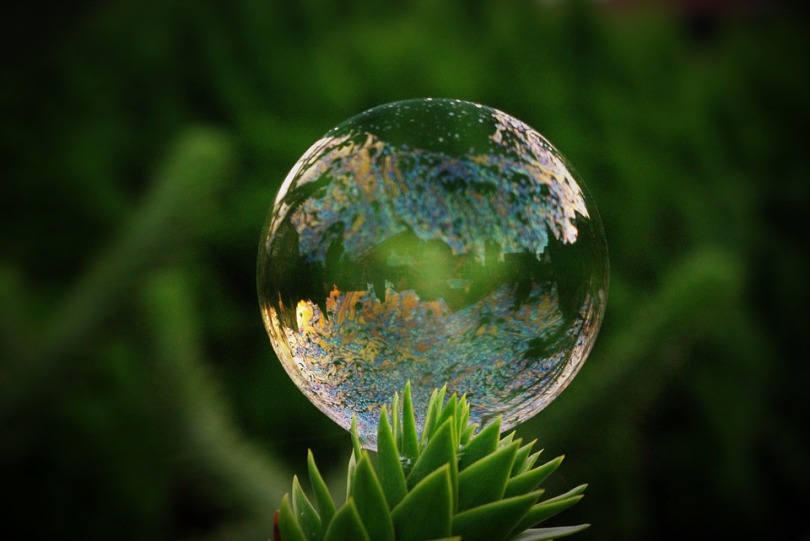Perfection is a quality found again and again in nature, but rarely is it ever witnessed in such abundance as this. Today I will be talking about bubbles. I love saying that word so much. Bubble. Bubbles. Ok, I’ll stop now.
The mundane definition of a bubble is simply a globule (great word too) of a substance surrounded by another substance. The normal bubbles we might witness in a carbonated drink, for example, are tiny spheres of gas surrounded by a thin layer of liquid – this is the most common form of bubble formation.
I’ll start with a bit of background information as usual for ease of explanation later on. Water is a strongly cohesive substance as there are very strongly attractive intermolecular forces between the individual water molecules. This is due to a phenomena known as dipole-dipole forces, which occur when polar molecules are attracted to one another. The oxygen in the water molecule is much more electronegative than the hydrogen, meaning that it has a greater tendency to pull electrons towards itself in the covalent bond. Since these electrons have been pulled closer to itself, the oxygen is given a partial negative charge. Likewise, the hydrogen has had electrons pulled away from itself, so it gains a partial positive charge. When two water molecules meet each other, the partially negative oxygen atom of one water molecule will be attracted to the partially positive hydrogen atom of the other water molecule – this attraction is known as a dipole-dipole force. There are other forms of attractions in action, but for now we can just focus on this concept.
If you imagine all these water molecules attracting each other through this process, eventually when you get to the edge of the water droplet, the water molecules will not have any more to bond with. Consequently, they cohere even more strongly with any of their adjacent molecules that are also on the surface. This forms a surface film which is much harder to penetrate than if you were to already be submerged in the water. This strong cohesive force at the surface makes up what is known as surface tension, which is why bubbles are able to form. You may have seen videos of insects that can glide on water due to this effect.
Bubbles are spherical in shape because this is the shape with which they can minimise their surface area for the given volume of air that they contain. It naturally assumes this shape due to the pulling effect of surface tension – the bubble film pulls inwards whilst the air pressure inside the bubble pushes outwards. By balancing these two forces, a sphere is thusly created. This intriguing property of bubbles to assume minimal surface structures have made them useful for solving practical problems and for use in designing tensile roof structures, where there is no compression or bending involved, only tension. Understanding how bubbles form can also benefit scientists in certain industrial processes, such as foam production.
Recently I’ve seen quite a few interesting things surrounding bubbles. Firstly, sonoluminescence is a phenomena where short bursts of light are released from imploding bubbles in a liquid when excited by sound. Scientists do not quite know how this works as yet, but it sounds like a novel approach to energy conversion. Researchers have informally called this bubble fusion. Another cool thing I found was antibubbles. Instead of the usual gas bubble surrounded by liquid, this is a droplet of liquid surrounded by a thin layer of gas. Check out this video for more on these! Yeah, I know right. So frickin’ cool.
Harvey

And then are are micelles, where the chemistry (and, sure, physics 😑) starts becoming biology. I know a guy who got his PhD in the physics of bubbles who now works at a large bank calculating new derivative investments. Nice post! MSOC
LikeLiked by 1 person
Thank you! I completely forgot about those questions, will get straight on them now 🙂
~Harvey
LikeLiked by 1 person
P.S. I would love some answers to my laser questions (go ahead and delete this playful nag 😇)
LikeLike
We should live in a world where lucid, entertaining presentations of science don’t have to be “made cooler,” somehow by being from “PhysicsGirl.” She’s an engaging and excited physicist – end of story! But great video- thanks!
LikeLiked by 1 person
Managed to muse upon while keeping bubbles lovely 🙂
LikeLiked by 1 person
Thank you 🙂
~Harvey
LikeLiked by 1 person